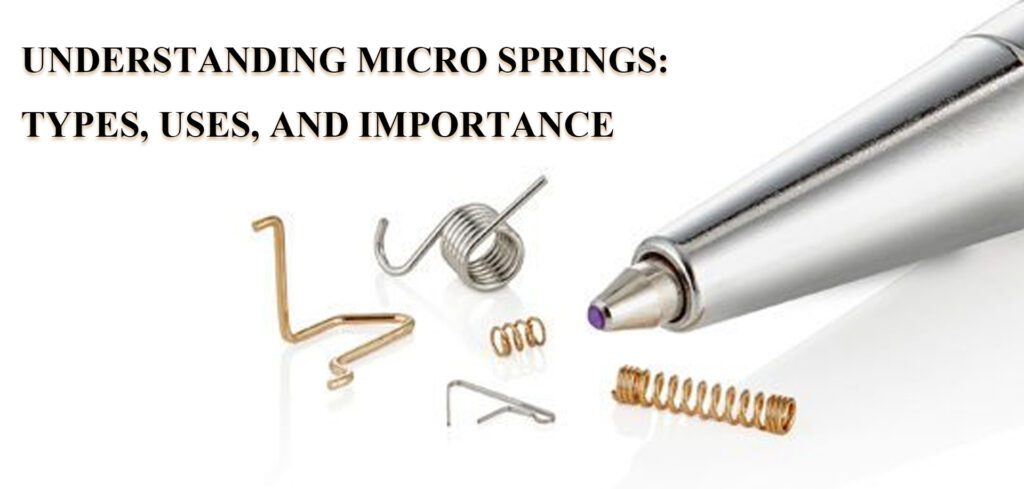A micro spring is a small, precision-engineered spring used in applications where space is limited and high performance is required. Despite their tiny size, micro springs offer reliable mechanical properties and are essential in various high-precision devices. Here’s a detailed explanation of micro springs:
Definition of Micro Spring
A micro spring is a miniature spring designed to provide precise mechanical action in small-scale applications. These springs can be compression springs, extension springs, torsion springs, or other specialized types, all manufactured to very tight tolerances.
Types of Micro Springs
Micro springs come in several forms, each suited to specific micro-scale applications. For example:
- Micro Compression Springs:
- Function: Resist compressive forces and return to their original length when the load is removed.
- Applications: Medical devices, microelectronics, small mechanical assemblies.
- Micro Extension Springs:
- Function: Resist stretching forces and return to their original length when the load is removed.
- Applications: Miniature switches, precision instruments, small toys.
- Micro Torsion Springs:
- Function: Resist twisting or rotational forces and return to their original position when the load is removed.
- Applications: Microelectromechanical systems (MEMS), small clips, and latches.
Materials Used
Micro springs are typically made from high-quality materials to ensure precision and durability, including:
- Stainless Steel: Offers corrosion resistance and high strength, ideal for medical and electronic applications.
- Phosphor Bronze: Provides excellent electrical conductivity and resistance to wear, suitable for electrical contacts.
- Music Wire: Known for its high tensile strength and flexibility, used in various mechanical applications.
Applications
Micro springs are crucial in a wide range of precision applications, including but not limited to:
- Medical Devices: Surgical instruments, diagnostic equipment, and implants.
- Microelectronics: Circuit board components, connectors, and microelectromechanical systems (MEMS).
- Aerospace: Precision instruments and control systems.
- Consumer Electronics: Smartphones, cameras, and wearable devices.
Manufacturing and Precision
The manufacturing of micro springs involves advanced techniques to ensure high precision and quality. For instance:
- Laser Cutting and Welding: Achieve precise shapes and connections.
- Electroforming: Create very fine structures with high accuracy.
- Precision Grinding and Coiling: Ensure that springs have the exact dimensions and mechanical properties required for their specific applications.
Importance of Micro Springs
Micro springs play a vital role in the functionality and reliability of miniature and precision devices. Their ability to provide consistent mechanical performance in small-scale applications makes them indispensable in many high-tech industries. For instance, in medical devices, micro springs ensure the proper functioning of intricate components. In consumer electronics, they contribute to the compact and efficient design of devices. The choice of material and type of micro spring directly impacts the performance and longevity of the application, making their selection and design a critical aspect of engineering.
By understanding the various types, materials, and applications of micro springs, engineers and designers can make informed decisions to enhance the performance and reliability of their products. Thus, micro springs, though small, have a significant impact on the effectiveness of modern technology.

